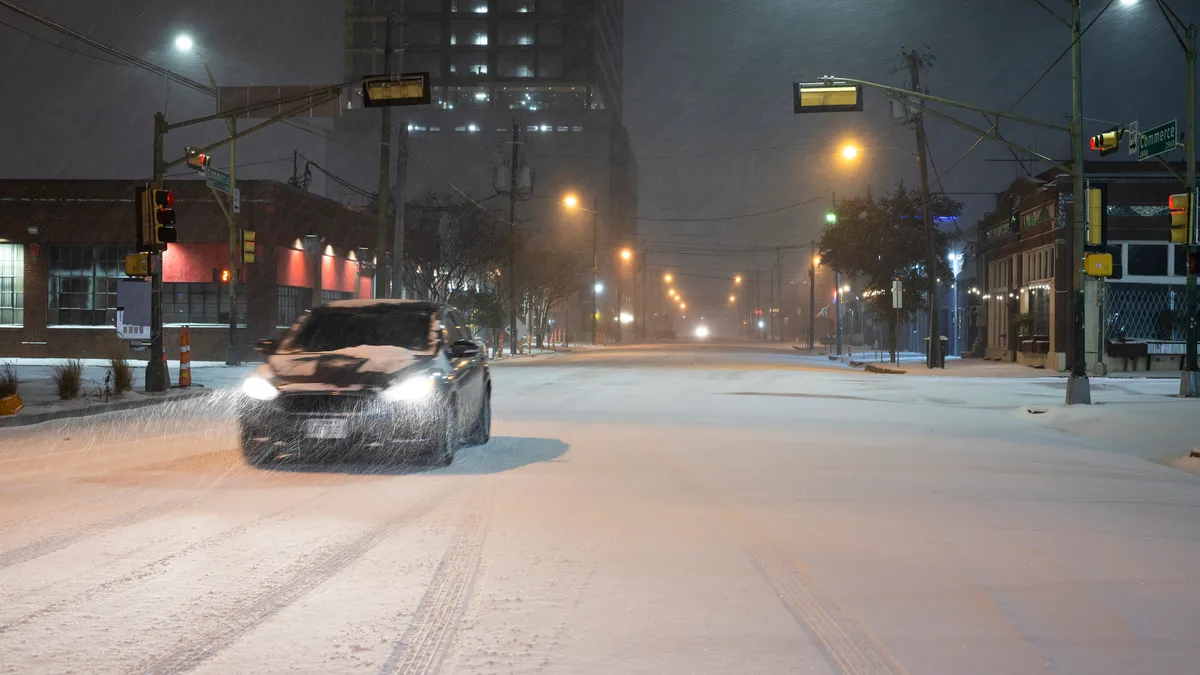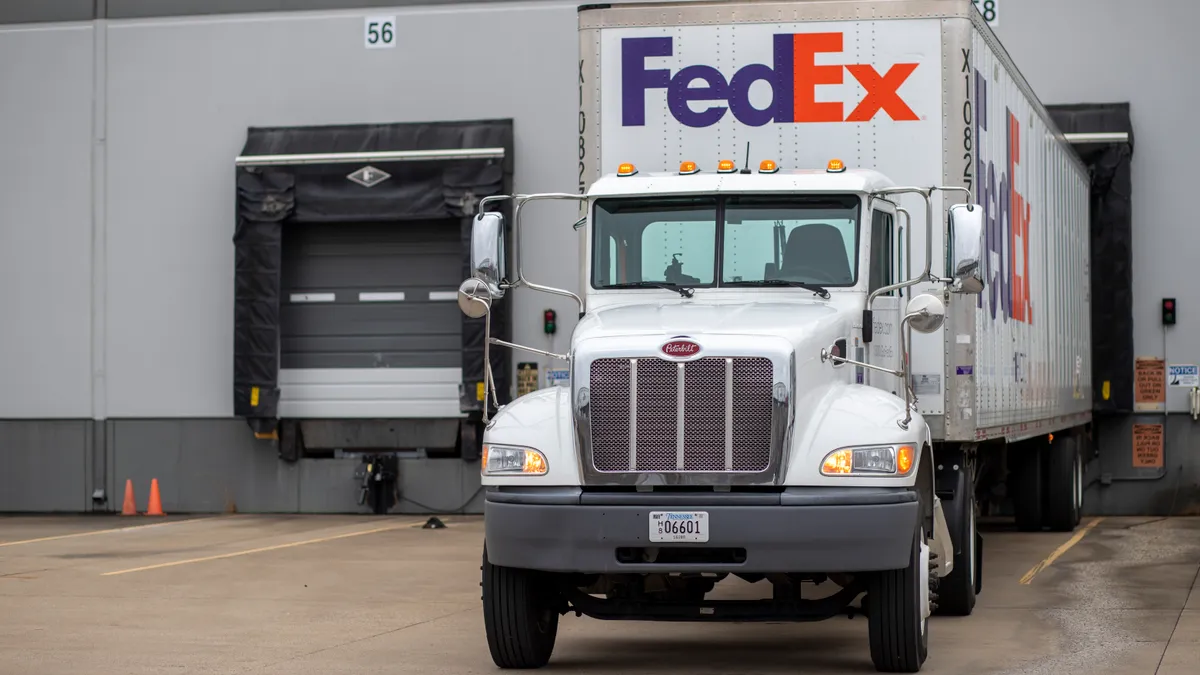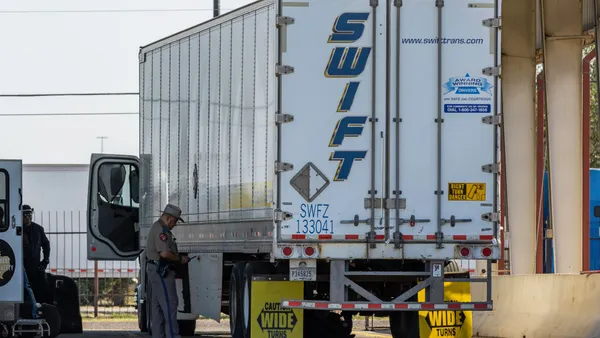The polar vortex that hit the central part of the nation in mid-February and plunged Texas into record cold is over, but its effects linger on in the spot market.
The reason is simple economics. As trucks parked throughout the Lone Star State to ride out the cold, ice and power outages, freight piled up in warehouses. More freight to move usually means higher truckload spot rates, said Brent Hutto, chief relationship officer for Truckstop.com. And that's what has happened for the last month, as the logistics of untangling the supply chain from storm-related damage began.
"Freight just couldn't move," said Hutto. "You had freight piling up."
Experts said high prices will continue, even as the storm's effects fade. Hutto said Truckstop.com is forecasting 2021 will see freight volumes jump 10% from 2020.
Some of that is the storm. But most of it is the pandemic-related surge in consumer activity.
"History tells us" that it is not likely the storm will change the trajectory of the market cycle, Sean Fahey, Coyote Logistics Senior Vice President of yield management, wrote on the Coyote blog.
"Again, we won’t know for sure until we are fully past Q1, but at most, the storm-related volatility will create a kink in the line before the cycle continues its course," Fahey wrote.
How the storm surged rates
The polar vortex storm began to move southward on Feb. 10. Within days, Arctic-level temperatures and snow went as far south as Waco, Texas, and Houston. On Feb. 11, more than 130 vehicles were involved in a traffic pile-up near downtown Fort Worth, on Interstate 35.
The Texas electricity grid was not winterized, and power was off for days in some Lone Star areas. Many terminals and warehouses were closed.
Prices soon reflected the issue. On Feb. 23, Omnitracs reported Texas long-haul deliveries dropped 36% week over week. And spot prices jumped. Hutto said national TL spot prices went from $2.48 per mile, already an elevated level, to $2.68 per mile in two weeks.
"Freight just couldn't move."

Brent Hutto
Chief Relationship Officer for Truckstop.com
More than a month after the winter storm left, TL spot prices are up 10% from the time before the storm, Hutto said.
Jason Miller, an associate professor of supply chain management at Michigan State University, said the storm is the culprit behind the bump in what were already high prices, as the kinks have not yet been ironed out.
"It certainly has cascaded through March," said Miller. "I think things are starting to normalize."
Everything's bigger in Texas
One of the reasons for the long effect was Texas' handling of the storm. Other states, used to winter weather, absorbed the punch. But Texas took longer to get its roads and grid up and running. And that had a national effect, Miller said, because Texas is a manufacturing hub.
Because Texas is so big, its problem increased what Miller called the occasional "misalignment" between capacity and demand. If the gap grows between the two, even by a few points, it can result in very substantial truck transportation costs, Miller said.
Spot rates keep their momentum
There likely won't be rest for the TL spot market, even as the storm effects subside. Miller said the weather is getting warmer, and that means a rise in demand for transporting certain types of crops.
"We're heading into produce season," said Miller. "And a lot of that moves on the spot market. From a shipper standpoint, Q2 is going to be rough."
The news for shippers may not improve until Christmastime, Hutto said. From the carrier standpoint, however, fleets will continue to see load demand and elevated rates on the spot market.
Hutto said despite the talk he has heard about the spot-rate surge subsiding in the summer, he is confident spot rates will remain high. And that's not because of the Ever Given getting stuck in the Suez Canal, port congestion or the polar vortex. Instead, it seems to be a pandemic-related appetite for goods.
"We've been above $2.40 [per mile] for seven months," said Hutto. "More freight continues to come into the marketplace."












